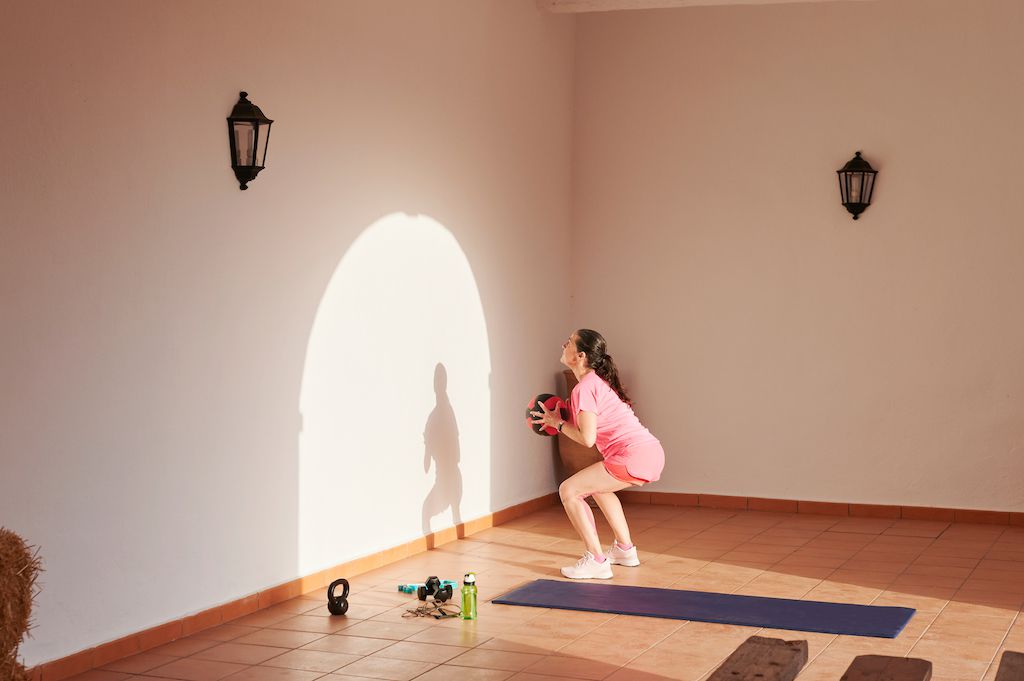How to Grow Your Facial Hair Thicker and Faster
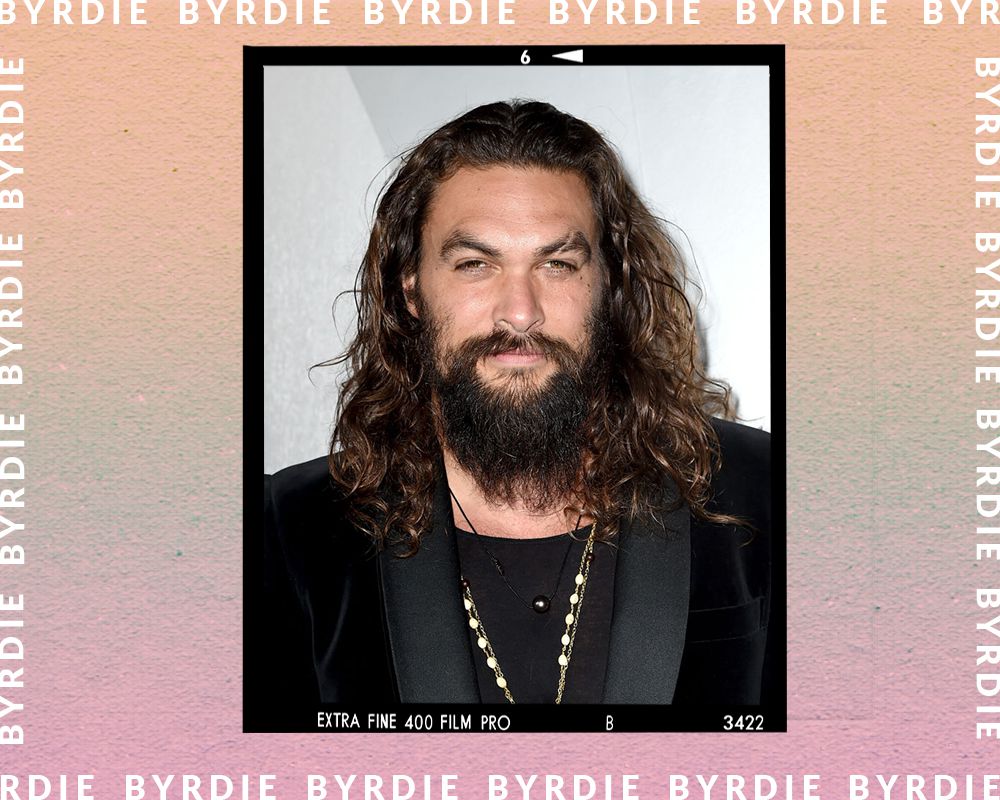
If you’ve set your mind on having fuller facial hair, or a particular beard/mustache style, then it’s only natural to want to make your facial hair grow faster. You want the results now! And if you’re approaching it from another perspective—as someone who can’t seem to sprout the volume or density of whiskers that they so desire—then it can feel like watching patchy, parched grass grow. How do you make your beard grow faster (not to mention thicker and fuller)?
First and foremost, it’s important to embrace and accept your genetics. Some people have better luck with this stuff naturally, and it’s crucial not to compare yourself to anyone who seems to sprout a James Harden beard in their sleep. You might have different hair density, fullness, texture, color, and growth rates, and these things all play a factor in the end result. However, you can take matters into your own hands to encourage and influence better, stronger, fuller, and faster growth.
“I always encourage my patients to have healthy and realistic expectations for what can be achieved,” says board-certified dermatologist Milton R. Moore, MD, founder of Holly Hall Supply Co. Skincare. “There are a lot of factors that affect hair growth that are simply out of our control. For example, some hair follicles are more responsive to our bodies’ hormones than others, and that’s something you just can’t change.”
For the stuff you can change—to varying degrees, that is—read on for tips from Moore and San Rafael, CA–based trichologist Martine Langsam.
Meet the Expert
- Martine Langsam is a certified trichologist in San Rafael, CA.
- Milton R. Moore, MD, is a board-certified dermatologist in San Antonio, TX, and the founder of Holly Hall Supply Co. Skincare.
01
of 05
Focus on the Following Nutrients (Especially Omega-3's)
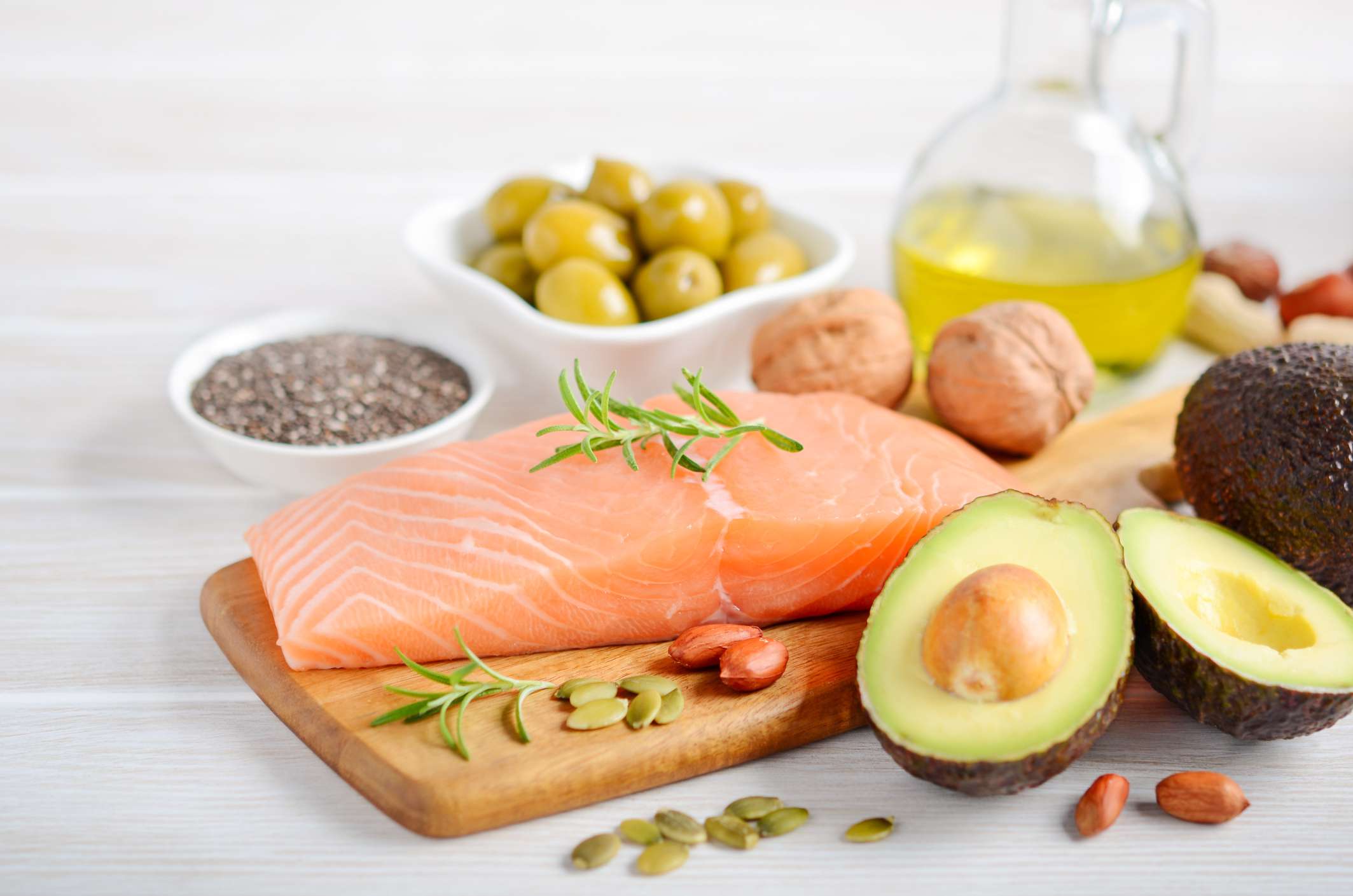
The better your health, the stronger and steadier your hair growth, says Langsam. And the vitamins to focus on are ample: “There are specific vitamins known to help hair health, these include vitamins A, C, D, and E, calcium, copper, zinc, biotin, folate, B12, iron (ferritin), magnesium, iodine, and selenium,” she says. “The best thing is to make sure you get enough vitamins, minerals, and trace elements needed for whole body health.”
As far as diet goes, foods rich in omega-3 fatty acids can also improve hair health, like avocados and olive oil, says Moore.
“For patients lower than the normal range, we may recommend supplements,” Moore adds. “Also, while many are under the false impression that the popular supplement biotin increases hair growth, [what it actually does is] strengthen the hair shaft, which leads to less breakage.” So, yes, it’s a good one to take, but it won’t give you a Tom Selleck mustache overnight.
At Byrdie, we’re fans of Nutrafol, a supplement that centers on ingredients like these (and more) to fortify hair growth. (While it recommends taking four pills a day of the supplement, you can spread them out and take one or two per day if you feel like a healthy diet is already doing you lots of favors.)
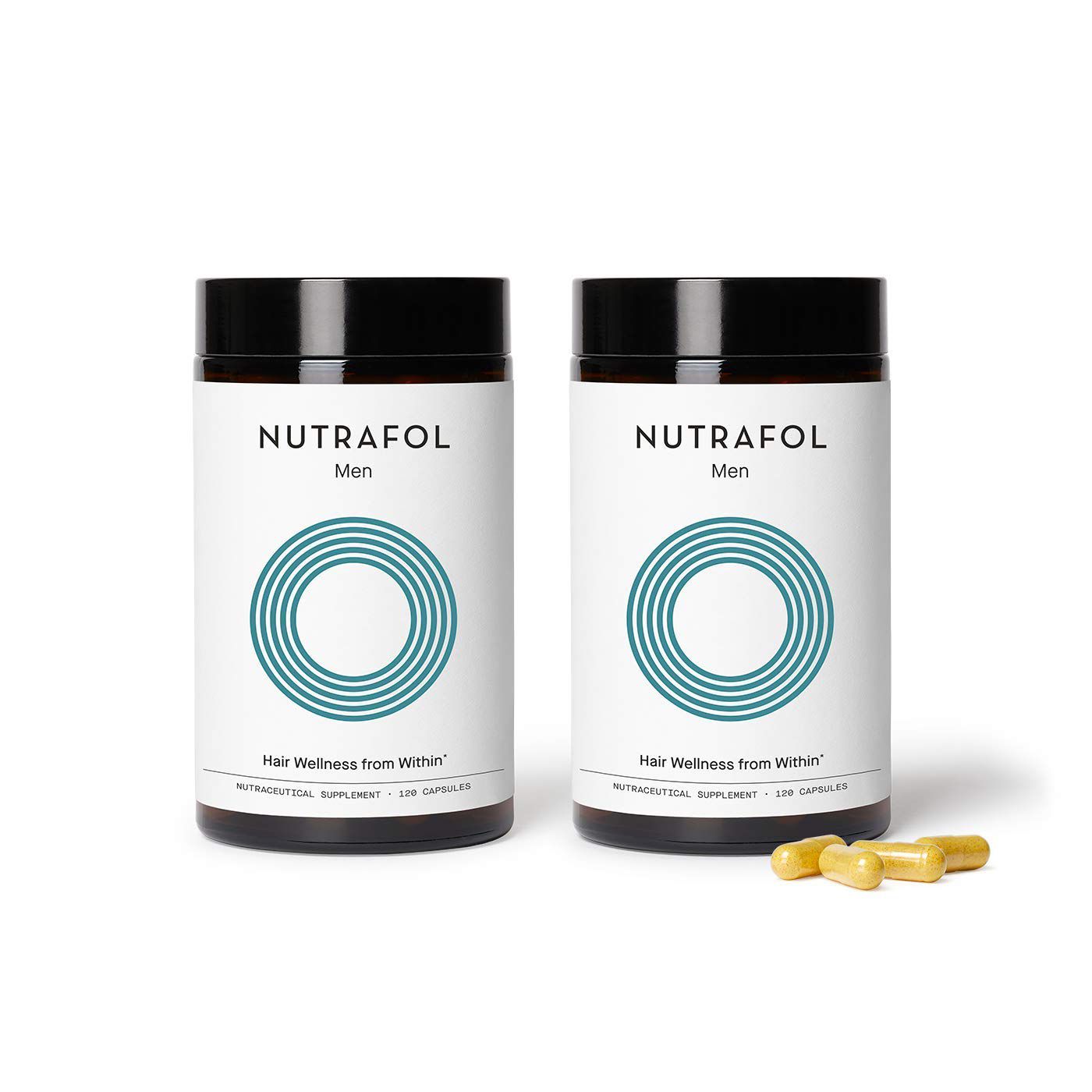
Nutrafol
Hair Supplement (2 Bottles)
$176
As we discuss in the Frequently Asked Questions below this article, the hair atop your head requires the same nourishment as beard hair, so by ingesting foods, nutrients, and supplements for either one, you benefit both.
02
of 05
Keep Facial Hair Superficially Nourished, Too
You’ve heard all about beard oils, and here’s why they’re so good for the whiskers: Moisturizing beard and mustache hair does more than reduce irritation, itching, and flaking, says Moore. It also strengthens brittle hair, and allows hairs to be their thickest, to soften themselves and cooperate with any styling aim, as well as to grow longer without compromise. “I love the combination of argan and jojoba oils for facial hair hydration,” Moore adds. “The ingredients work together synergistically to keep facial hair moist and supple. Argan oil penetrates the hair shaft to hydrate from within, as the jojoba oil mimics the composition of the natural oil our body produces to moisturize and protect externally. It’s also great for those with sensitive skin.” (This is why Moore put the ingredients into his own brand’s beard oil.)
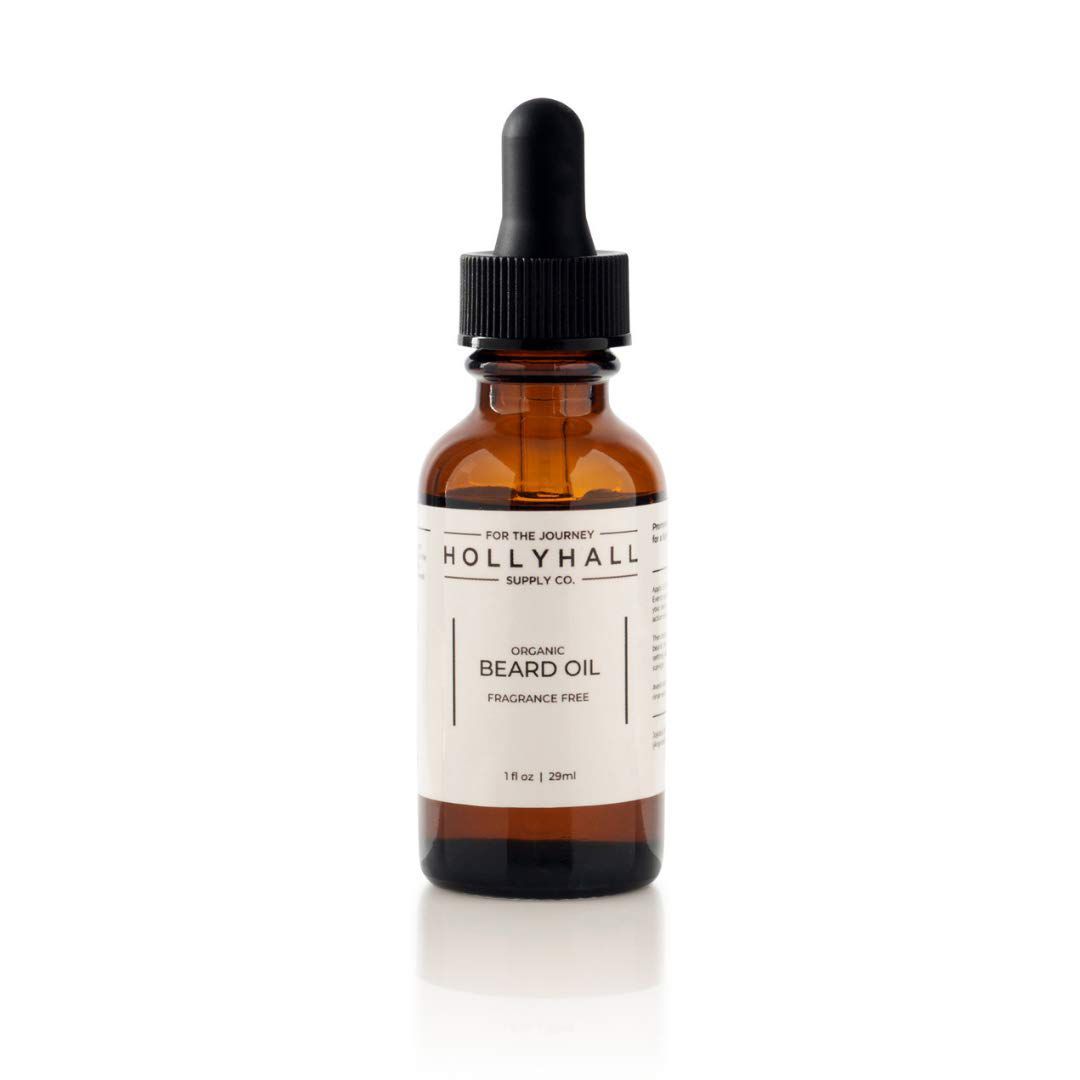
Holly Hall Supply Co.
Beard Oil
$14
03
of 05
Reduce Stress, and Get Rest

Stress has a huge effect on our entire body, including our hair and facial hair. “Facial hair growth is very closely tied to testosterone production, so things that negatively impact testosterone levels (such as lack of sleep or increased cortisol levels) are to be avoided,” says Moore. “Stress can increase cortisol levels, while exercise is one of the most effective ways to reduce it.” It’s a terrific excuse to go to bed early and get a full eight hours of slumber: This bountiful beard won’t grow itself!
04
of 05
Cut the Vices
You know what else increases the body’s cortisol levels? Alcohol and processed foods. Along with a host of other vices, these things significantly stunt your hair growth (just as they hinder other bodily functions and impact your own skin’s brightness and suppleness). “You should absolutely not smoke,” adds Langsam. “This is toxic to the hair follicle and causes apoptosis (cell death).”
05
of 05
Test Out Minoxidil
Here’s one take that some doctors endorse but others discourage. Minoxidil is a topical solution that could encourage hair growth on the face. It’s the same liquid or foam used on top of the head to increase circulation and deliver more nutrients to the hair, in turn preventing hair loss and even restoring some lost hairs. Moore is on the fence about its efficacy for the cheeks, but provides the following guidance: “Be very careful not to put minoxidil on places where you don’t want hair to grow, as it can stimulate hair growth in areas you don’t want. So, don’t just think about the application site but also how perspiration and other factors could cause it to travel to other areas. Also, consistency is key. Application needs to be consistent for at least 3–6 months to see if it will be effective. Some people are hesitant to start because of the common misconception that stopping will cause a net loss of hair when it’s more likely that, if you do stop treatment, you’ll likely revert to your natural state as if you never received treatment.”
Minoxidil, which is the generic for Rogaine, now comes over the counter in two types of concentrations: 2% and 5%. The 2% is typically given to women experiencing hair loss or thinning. The 5% is given to men for the same causes. As for the face, Moore says men should stick with the 5%, but with a warning: “If we’re going to utilize minoxidil on the face, the only hesitancy with 5% is that it can cause some flushing or irritation. But I typically stick with 5% for this area [due to its increased efficacy].”
Again, some doctors will advise against minoxidil on the facial hair area altogether. It’s not something that has been studied long enough. But the writer of this article claims to have seen some success with it, so it’s also one of those “proceed with caution, all awareness of the matter, and a doctor’s supervision” situations.
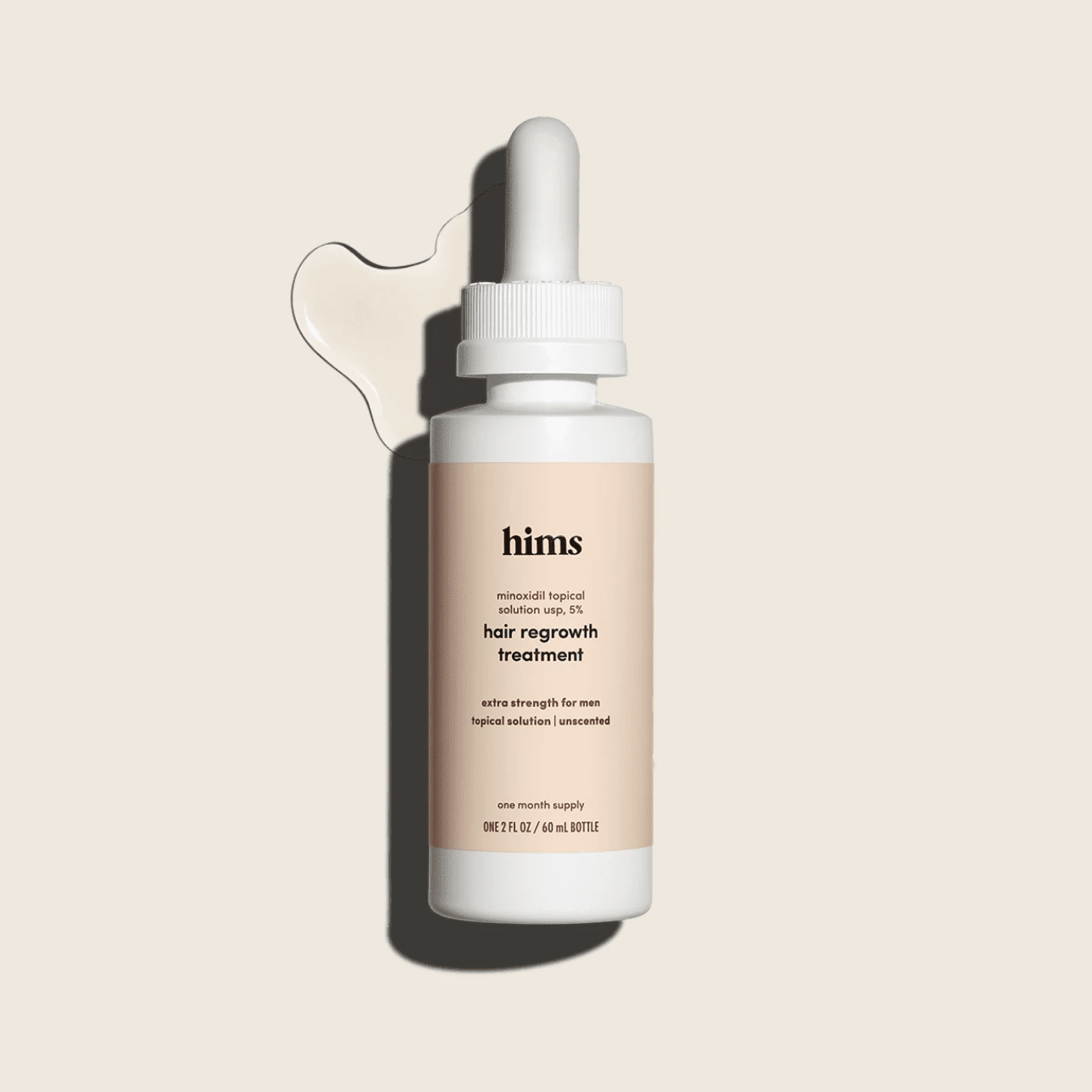
hims
Minoxidil 5%
$15

